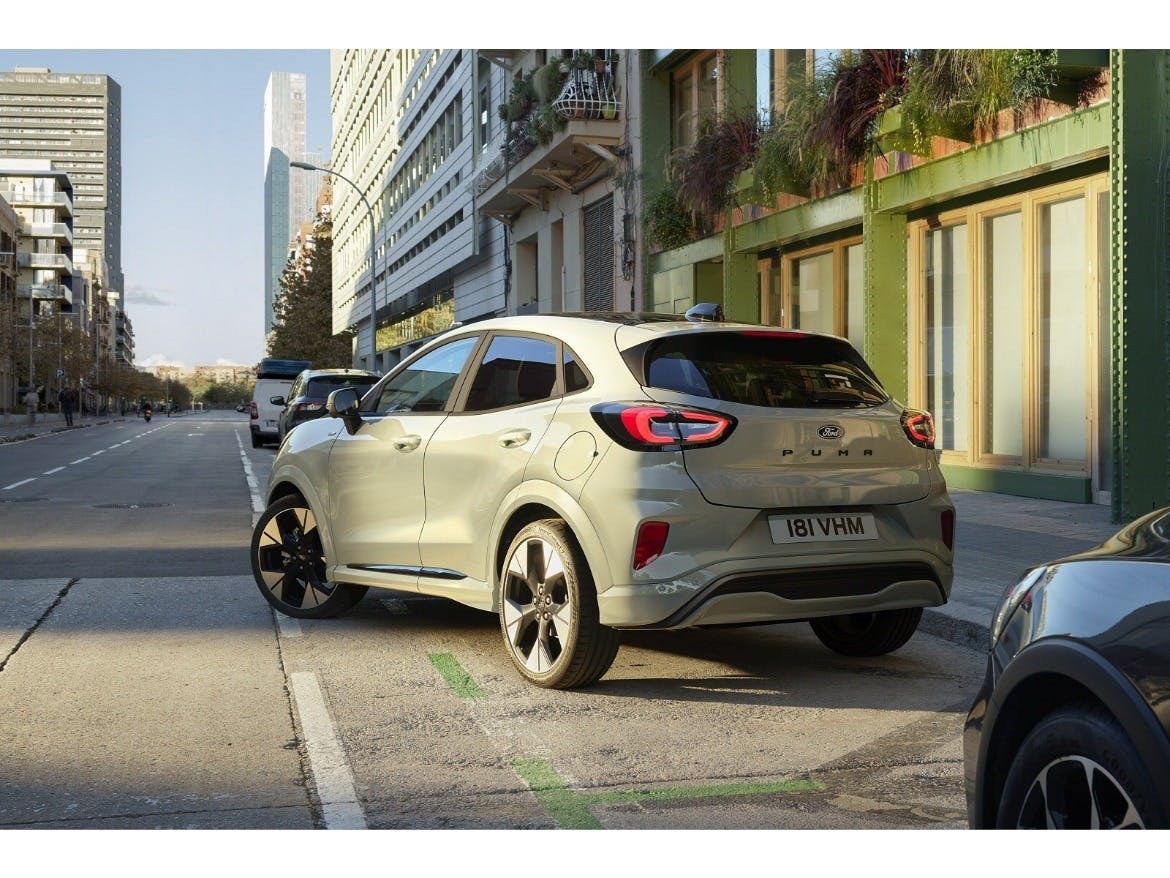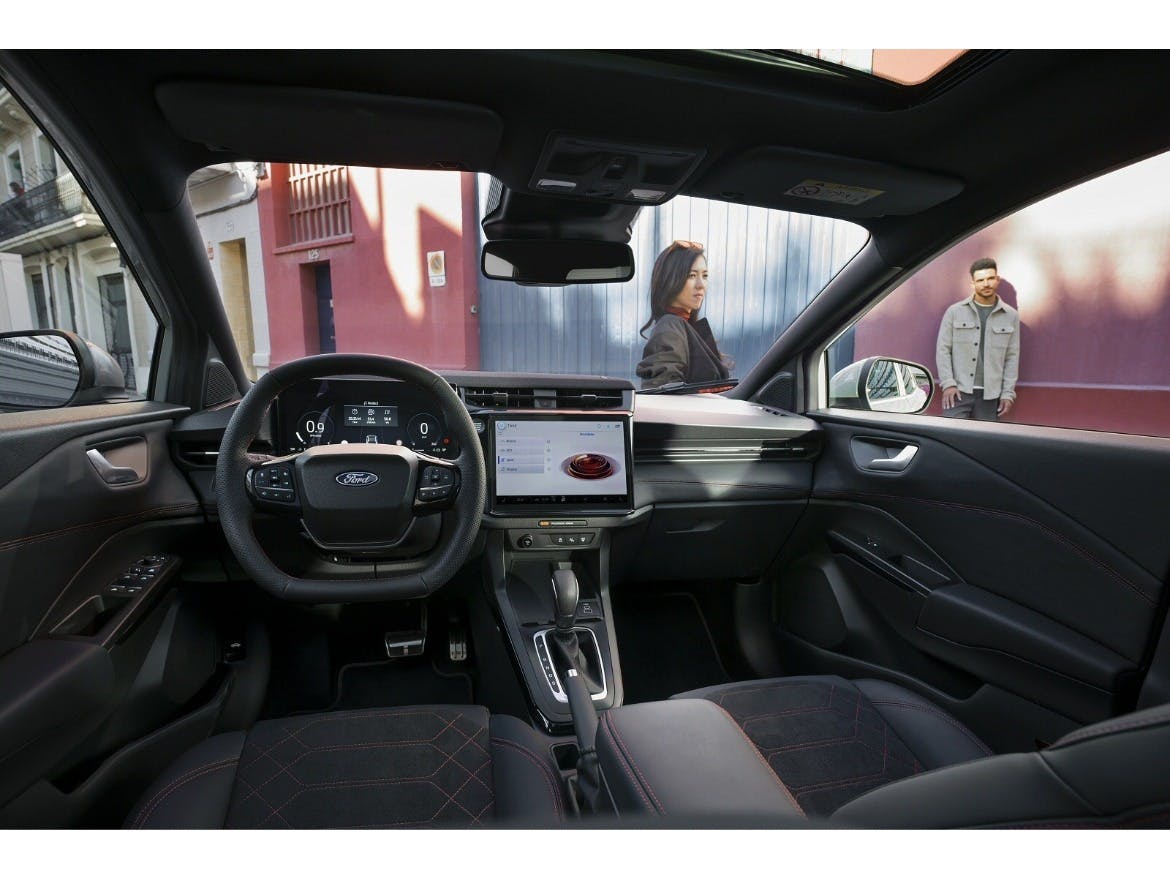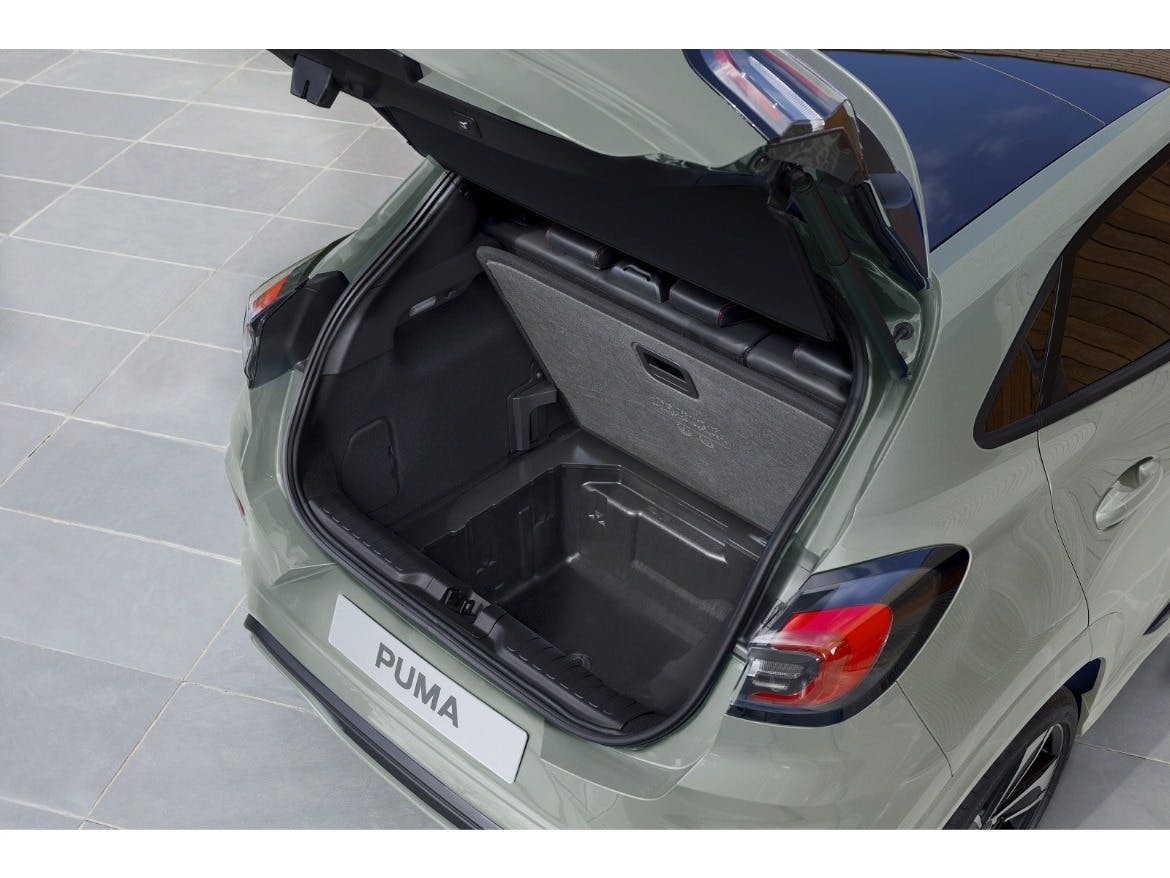
The Ford Puma champions mild hybrid technology and doesn't have much time for SUV conventionality. All of which is likely to suit its fashionable band of potential Motability drivers just fine. Frugal, fun and well connected, this improved version of Ford's Puma fits perfectly with the spirit of its time. Just like the original Puma did.
This month, these Ford Puma New models can be ordered through the Motability Scheme:










Search all the Ford Puma Motability Advance Payment prices and trim levels for April, May and June 2024, or read our guide to the latest Motability price changes and updates here.
Ford Puma Motability Advance Payment Offers
You'll probably be aware of Ford's Puma - it's a strong seller. The name was borrowed from a much-loved turn-of-the-century little Ford coupe, but what we've got with this car is what the brand calls an 'SUV-inspired Crossover'. Here, we look at this car's mid-term facelift, which builds on sales success which saw the original version of this model topping the UK car sales charts in 2023.
As before, this Puma is good looking, efficient and spacious by class standards, with loads of clever interior touches too. And if it can deliver on its dynamic promises, you might just have here pretty much everything you'd want a small SUV to be. Is that what this improved Puma serves up? Time to find out.
Ford hasn't fundamentally changed anything about the engineering or handling of this revised Puma; it didn't need to. This was already the most engaging car to drive in its segment. What the company has done (rather disappointingly) is drop the sporty 1.5-litre four cylinder engine previously fitted to the top Puma ST, so all Pumas now use some sort of three cylinder 1.0-litre EcoBoost mild hybrid 48V unit, the powertrain you probably would have chosen anyway. As before, for mainstream models this comes in either 125PS or 155PS forms, the lesser engine offered with either 6-speed manual or 7-speed automatic transmission. The 155PS variants come only in auto form. As does the top sporty ST flagship variant, which gets this 1.0-litre engine tuned up to 170PS. The availability of a manual transmission Puma ST was deleted along with that much more powerful 200PS 1.5-litre four cylinder engine.
Selectable drive modes feature - 'Normal', 'Eco', 'Sport', 'Slippery' and 'Trail'. As before, the 1.0-litre EcoBoost petrol unit isn't a full-Hybrid; i.e. it can't ever power the car on battery power alone. Instead, an 11.5kW integrated starter/generator recovers energy when coasting or braking which then gets stored in a small lithium-ion battery. This is then used to assist the engine during acceleration and to run the stop/start system. The rest to 62mph sprint in the 125PS model takes 9.8s en route to 119mph, figures the 155PS model improves only slightly to 8.7s and 124mph. The 170PS ST is a bit faster (7.4s and 130mph). With the Puma ST derivative, an optimised chassis features bespoke twist-beam, anti-roll bar and damper configurations. And steering response is 25% faster and the brakes are 17% larger than the standard Puma. For the mainstream line-up, some might want to wait for the all-electric Puma Gen-E, which will use a 55kWh battery offering around 230 miles of range.



The visual changes to this updated model are quite subtle; revised headlights that incorporate a smarter daytime running light signature and a restyled version of the Ford grille badge. That grille is dechromed with 'Titanium'-spec models, while 'ST-Line' variants get a more aggressive front bumper. As before, the headlights are high up on the bonnet (like the turn-of-the-century Puma coupe) and Ford says that the beady daytime running lights are a nod to a more modern Ford coupe, the GT supercar. Maybe.
Inside, the update changes are far more obvious. The redesigned dashboard is less cluttered than before and features slim air vents, a wraparound feel and a revised two-spoke squared-off steering wheel. the displays are larger too: there's now a 12.8-inch customisable digital instrument panel with higher-definition graphics. And a 12-inch SYNC4 central infotainment monitor which apparently has 'twice the computing power' of the previous SYNC3 system. Underneath that screen lie new 'soft' buttons for the climate control and heated seats. Plus there's a new 'phone storage compartment with an integrated wireless charging mat. Synthetic leather upholstery adorns the seats, the armrest and the steering wheel, with different stitching colours depending on the trim level you've selected. And there's smart ambient lighting to give the cabin a classier feel.
As before and as you'd expect from a supermini-based SUV, there isn't a great deal of space in the rear, but a couple of adults can be accommodated reasonably easily for medium-length journeys. We continue to be impressed by the boot. At 456-litres, it remains one of the very biggest trunks in the small SUV segment and can be accessed by a powered hands-free tailgate. There's also an adjustable-height floor that can be folded back against the back seats. Under the floor, there's still a drainable 'Megabox' for dirty items, a strong selling point.
All models come with LED headlights and alloy wheels - 17-inch rims on mainstream versions, 18-inchers on the 'ST-Line X' and 19-inch alloys on the top ST. There's also LED tail lamps with auto high beam, rear privacy glass, a Quickclear windscreen and cruise control with Intelligent Speed Assist. Inside, the new screens are standard-fit - a 12.8-inch instrument cluster and a 12-inch SYNC4 central monitor with 'Apple CarPlay' and 'Android Auto', plus connected navigation, a 6-speaker audio system and FordPass Connect media connectivity. You also get Electronic Automatic Temperature Control, a rear view camera and the useful 'Megabox' extended loadspace in the boot.
Drive assist tech includes 'Pre-Collision Assist' with Autonomous Emergency Braking and pedestrian/cyclist detection. Plus a Driver Impairment Monitor, Post-Collision Braking, a Lane Keeping Aid and Lane Departure Warning. New options added to this revised range include 'Intersection Assist', 'Reverse Brake Assist' and 'Predictive Speed Assist' (the latter feature automatically slowing the car when approaching a corner or a junction). Anti-glare matrix headlamps are also now optional, as are Predictive Bending Dynamic Lights, which utilise GPS data to automatically adjust the lighting for forthcoming bends.
Being based on Fiesta engineering promises decent efficiency, as does Ford's EcoBoost mild hybrid technology and that's how it turns out. For the 125PS variant, Ford is talking about CO2 emission readings from up to 122g/km and a combined cycle WLTP fuel return of up to 52.3mpg - or 130g/km and 49.6mpg in auto form. For the 155PS derivative, the figures are 49.6mpg and 128g/km. For the 1.0-litre ST 170PS version, the figures are up to 47.1mpg and 136g/km, a decent improvement on the stats of the old 1.5-litre ST variant (42.8mpg and up to 148g/km). If you want real efficiency though, you'll need to wait for the full-electric Puma 'Gen-E' model. This will offer about 230 miles of range, will charge at up to 100kW and will give you a 10-80% top-up in under 35 minutes.
For the combustion models, the claimed efficiency readings are all aided by what the brand calls 'Torque substitution', which deploys the electric motor functionality of the hybrid system's 'BISG' 'Belt-driven Integrated Starter/Generator' to provide up to 50Nm of torque - reducing the amount of work required from the petrol engine. The 'BISG' is also able to aid the powerplant's stop/start system in urban traffic, restarting the engine in approximately 300 milliseconds - about the same as the blink of an eye. And the 'BISG' also enables the Puma EcoBoost Hybrid's Auto Start-Stop technology to operate in a wider range of scenarios for even greater fuel savings, including when coasting to a stop below 10mph, and even when the vehicle is in gear with the clutch pedal depressed.
Back in late 2019, Ford's decision to re-use the Puma name for this little SUV wasn't universally popular amongst enthusiasts for the original coupe model, but that doesn't matter much. After all, for the real target market here, this car's badge is more likely to suggest sports ware or trainers than a classically-styled sports coupe. And that lifestyle orientation fits with the kind of little SUV this Ford is still trying to be - active, trendy, charismatic and current.
It isn't perfect of course. This Puma's a little on the pricey side once you specify a decent trim level. Overall though, there's an awful lot to like here, particularly with this improved model. Ford needs a credible entry-level point for its SUV line-up and this Puma fills that role very well, while setting benchmark standards for the kind of driving enjoyment a little car of this kind can serve up. As enthusiasts, we still can't help wishing it was a small coupe. But as pragmatists, we reckon Ford has got this car just about right.
People with a disability and carers who choose a new Ford Puma through Motability will receive a brand new car, delivered by a Motability Specialist at a local Ford dealership, complete with insurance, servicing and maintenance, full breakdown assistance, replacement tyre cover, windscreen repair or replacement cover plus a mileage allowance of 60,000 miles over three years.